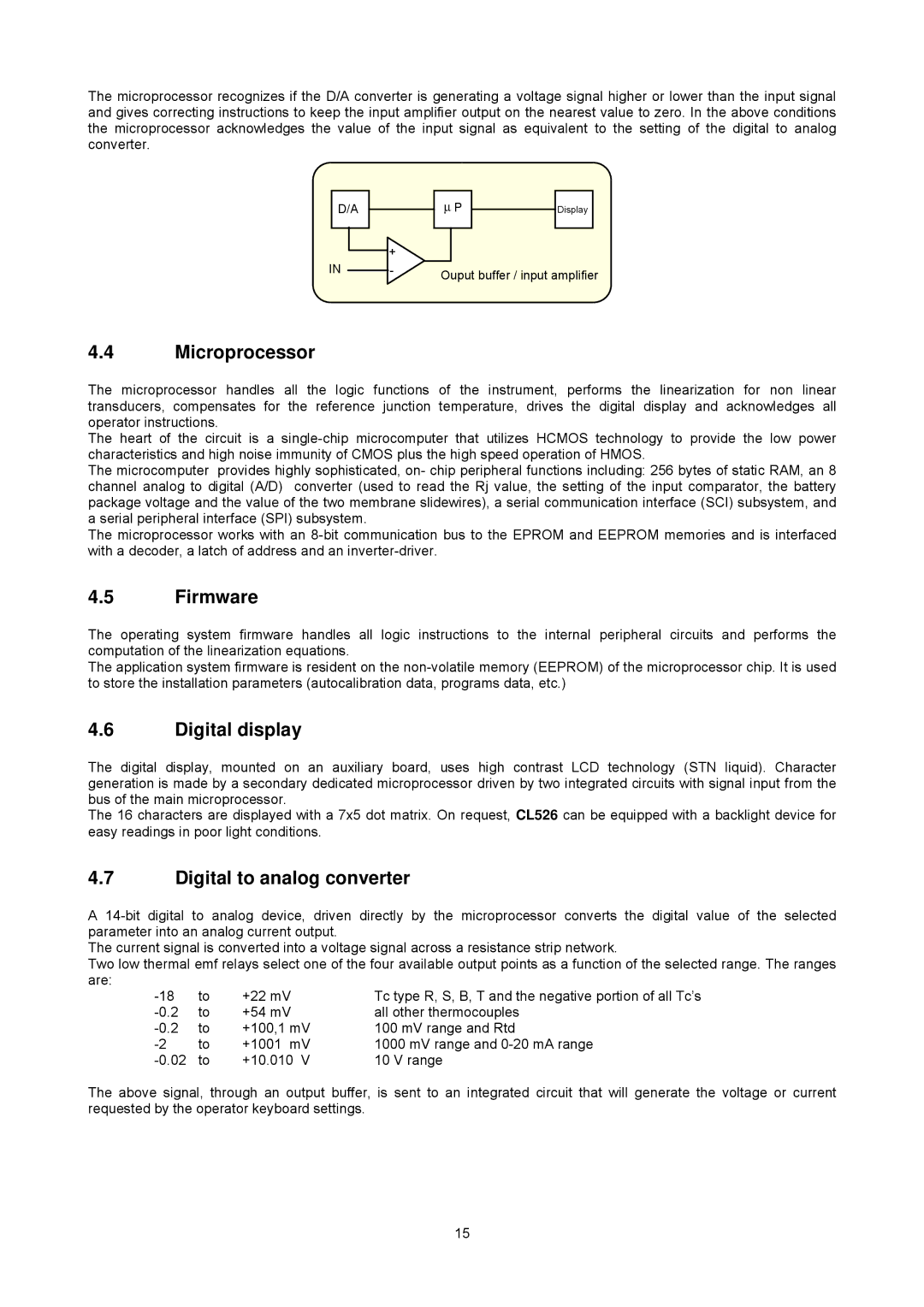
The microprocessor recognizes if the D/A converter is generating a voltage signal higher or lower than the input signal and gives correcting instructions to keep the input amplifier output on the nearest value to zero. In the above conditions the microprocessor acknowledges the value of the input signal as equivalent to the setting of the digital to analog converter.
D/A
+
IN -
| ∝ P |
| Display | |
|
| |||
|
|
|
|
|
|
|
|
|
|
Ouput buffer / input amplifier
4.4Microprocessor
The microprocessor handles all the logic functions of the instrument, performs the linearization for non linear transducers, compensates for the reference junction temperature, drives the digital display and acknowledges all operator instructions.
The heart of the circuit is a
The microcomputer provides highly sophisticated, on- chip peripheral functions including: 256 bytes of static RAM, an 8 channel analog to digital (A/D) converter (used to read the Rj value, the setting of the input comparator, the battery package voltage and the value of the two membrane slidewires), a serial communication interface (SCI) subsystem, and a serial peripheral interface (SPI) subsystem.
The microprocessor works with an
4.5Firmware
The operating system firmware handles all logic instructions to the internal peripheral circuits and performs the computation of the linearization equations.
The application system firmware is resident on the
4.6Digital display
The digital display, mounted on an auxiliary board, uses high contrast LCD technology (STN liquid). Character generation is made by a secondary dedicated microprocessor driven by two integrated circuits with signal input from the bus of the main microprocessor.
The 16 characters are displayed with a 7x5 dot matrix. On request, CL526 can be equipped with a backlight device for easy readings in poor light conditions.
4.7Digital to analog converter
A
The current signal is converted into a voltage signal across a resistance strip network.
Two low thermal emf relays select one of the four available output points as a function of the selected range. The ranges are:
to | +22 mV | Tc type R, S, B, T and the negative portion of all Tc’s | |
to | +54 mV | all other thermocouples | |
to | +100,1 mV | 100 mV range and Rtd | |
to | +1001 mV | 1000 mV range and | |
to | +10.010 V | 10 V range |
The above signal, through an output buffer, is sent to an integrated circuit that will generate the voltage or current requested by the operator keyboard settings.
15
